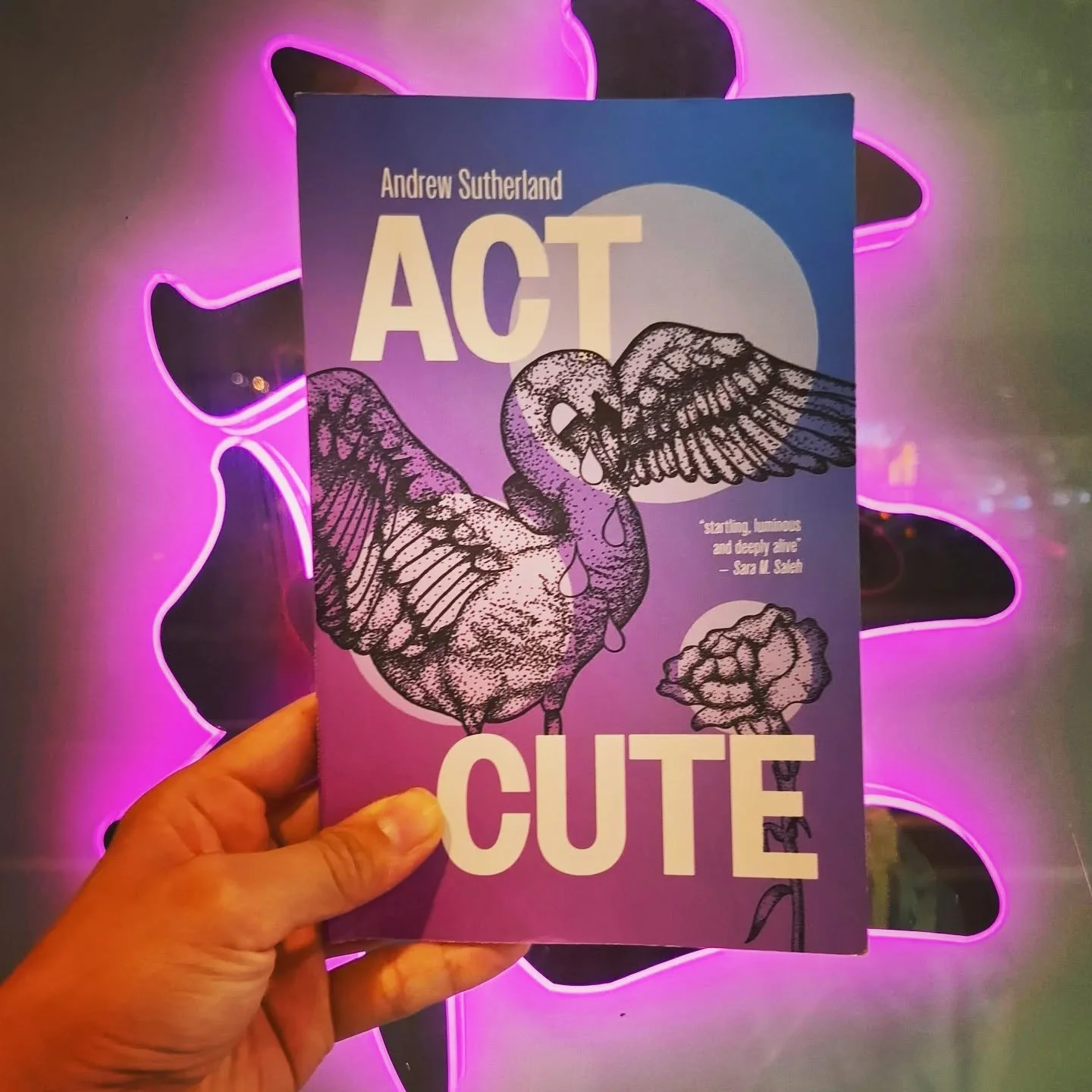An Account of Larking
By Samantha Neugebauer
Review of Vital Signs by Amlanjyoti Goswami (India: Poetrywala, 2022)
Rather than creating external tensions or cultural clashes, the poems in Amlanjyoti Goswami’s second poetry collection, Vital Signs, are more interested in interrogating the internal conflict of the displaced poet and person. These poems are death-haunted, vigorously journeying between the land of the living and the land of the dead. For example, take the captivating poem “At the End of Today,” in which the narrator’s mother “will shrug off” her “oxygen cylinder” and the “tubes on her nose” and “thank the nurses at the counter, wish them a long life” before leaving the confinement of the hospital to walk through her hometown and reach her bedroom. The mother’s walk is long, nostalgic, and pragmatic. Along the way, she sees “the parantha shops, momo shacks, mutton ghugni joints” and hears “the whispers of lovers no longer there.” At one point, “she will buy medicines herself from the pharmacy closed for all time,” a beguiling image, which suggests that the walk itself might be medicinal. Throughout the book, Goswami creates similar images of solitary people making sense of themselves and their world through small acts of defiance and contemplation. Additionally, in many of his most personal poems, Goswami seems to be weighing the writing and reading life with the life lived in the moment. Thus, this book is primarily concerned with large-scale philosophical questions about how best to live in times of suffering.
In the aforementioned poem, the poet figures his own mother as a displaced person after her hospital visit, as if to say that we're all displaced from our own lives somehow. This theme is most evident in the collection’s second section, “Belief,” which begins with the intriguing declaration, “One must also make it float.” What must float? While Goswami never tells us directly, it seems what he wants most is for our imagination and empathy to float and engulf us. In this section, we have the long poem “Durga Puja, this time (in five parts).” Although there is reverence for the traditions of this annual Hindu festival, there is also inquisitiveness. In “2. Saptami,” for example, the narrator says:
It comes from the heart, yes
But something in the air must be.
More than chest thumping and triumph
Towards something resembling…devotion?
The word “devotion” doesn’t appear again in the book, but it’s apparent from other poems that the poet is devoted to the written world and to storytelling. How to be a devotee, and whether or not one can be devoted to many different things, seem to be Goswami’s questions.
In “5. Dashami,” for example, we are given the image of tea garden workers in Assam who “weep their heart out” because “they can’t bear to see the goddess go. / It will be all picking and planting from here on.” Without their goddess, it seems, the tea garden workers cannot distract themselves as easily from their economic realities. Meanwhile, the narrator is partially removed from this celebration: it’s “they,” not we or I, who “can’t bear,” and he admits to being preoccupied with “fiddling with the cricket scores.” Nonetheless, Goswami imbues these workers with dignity by highlighting their heartfelt emotions and their labor.
Image description: The photograph is Dorothea Lange’s “Woman of the High Plains, Texas Panhandle” (June 1938). It depicts a woman in a short-sleeved dress standing in a field, turned to face the sun, with her right hand on her forehead and her left hand at her neck.
Goswami is concerned with issues of class and labor in other poems as well. Inspired by Dorothea Lange’s 1938 photograph of the same name, the ekphrastic poem “Woman of the High Plains” is one of the most commanding in the collection. It brilliantly captures the fortitude and despair of Lange’s subject. We feel Goswami’s mind working in this poem. He wonders deeply about the woman in the photograph in the way many others wonder about the Mona Lisa. By doing so, he uplifts and dignifies the ordinary worker: “She cannot resist a smile. Where does it come from?” He imagines her life yet admits that we will never know her, not even her name. Goswami is okay with not knowing. Knowing more about her would “change things.” It might “Turn her into an emblem, / Fortitude against the elements.” This poem appears in the collection’s third section, “Fellowship”—that is, it comes after “5. Dashami”—so the reader can link this nameless woman with the nameless workers of the Assam tea plantation. Near the end of the poem, Goswami writes, “But she is alive, willing, a survivor.” And we can ascertain the same of those workers from his homeland. The image of the tea worker is vivified by the association, even if the reader has never met an actual tea worker. This outdoor worker is an emblem of tough labor: they are displaced by the mechanics of late capitalism, yet also instrumental to its processes.
While Goswami’s preoccupations in each of the collection’s three sections—“Life,” “Belief,” and “Fellowship”—overlap, there are significant demarcations in the three parts, both tonally and thematically. It’s a substantial book, with sixty-five poems, including two long narrative poems, several sonnets, and odes. “Life,” more than the other sections, is full of lush and intimate settings. Goswami, who grew up in Guwahati, Assam, in northeast India, lives in Delhi now, but many poems in “Life” feel submerged in the sensory memories of his narrator’s childhood. At the same time, they reveal the guilt and loneliness of a person who leaves his hometown for larger opportunities and experiences. In “Breakfast at the Table,” a man is eating alone, and his poached egg reminds him of his childhood. He thinks of the “fire of red earth scrambling among ants and dreams / That finally came true.” One day, he
Put on a silken grey suit and went further than
All his ancestors with a red tie and hint of cologne
Early morning the first to rise and fresh for the next
Deal at the fancy hotel he was staying in
Where the cutlery clattered and Mozart rooted from the
Invisible speakers on the walls.
The narrative here has a present-moment quality; the reader can imagine it happening right before or after the breakfast. Yet, the man’s going “further than his ancestors” implies a series of choices and actions to get himself to this more elevated, though solitary and nostalgic, place. Furthermore, the evocation of Mozart suggests a cosmopolitan setting that differs from that of his hometown. A similar ambiguity emerges in “Mystery,” where Goswami writes:
An old friend visited me and we discussed (in Sanskrit)
What went into a good education.
From all accounts, I was ‘doing well’.
Enough in the bank, for many more meals.
Much left to be done.
The reader can immediately perceive the narrator’s ambivalence in these lines. The quotes around “doing well” operate similarly to a parenthetical: they are a conspiratorial moment between the writer and the reader. What does “doing well” even mean? The balance in one’s bank account cannot wholly account for one’s literary merit or achievement. The poet and the friend operate on different understandings of “doing well.” Goswami considers it important to note that they are speaking in Sanskrit, as if to say the ancient language, like all languages, is at times insufficient to communicate our desires and understandings.
These poems are charged with displacement, but they are not twined with the anger or bitterness that underscore many tales of displacement. In fact, the narrator’s identity feels refreshingly fluid, defined by his openness and cosmopolitanism. Goswami references the Irish poet W.B. Yeats, the American trumpeter Miles Davis, the Japanese novelist Kawabata Yasunari, and the Indian poet Mirza Ghalib with equal ease. Moreover, not only has his poetry been published in journals and anthologies throughout the world, but Goswami’s work has appeared on street walls in Christchurch, buses in Philadelphia, and exhibitions in Johannesburg, to name only a few places.
It’s this global outlook that defines the collection, not just in the discussion of class and labor but also in Goswami’s treatment of nature, faith, and urban wonderment. There are also a handful of accounts of fairies and magical creatures in these poems, which could feel out of place in a book mostly comprised of realist scenes, but these evocations work because our narrator is always so open-minded, curious, and humble. It’s not hard to describe our narrator as an inspirational voice. He sees people and magic everywhere, from books to trees to “huts from Hobbit, thatched and magical.” In the poem “Little People,” for instance, “we enter a fairy tale. / Snow White & Gulliver.” Goswami’s synthesizing mind has plucked these two characters from their respective stories and placed them side-by-side in a narrative of his own making. His Snow White and Gulliver proceed to “feed us their best meal—rice dal & vegetables/ egg curry, a week’s wages.” It’s a delightful image that can only be recreated by a poet as wistful and playful as Goswami.
In the poem “Mystery,” Goswami asks: “Didn’t I have a history of larking?” The most effective rhetorical question is a persuasive device: it supplies you with the answer while making you believe you knew the answer all along. The answer to Goswami’s question is yes. Moreover, it’s quite right to say that Vital Signs is an account of larking. This is not to imply that the poetry is not serious. Rather Goswami elevates larking to the realm of the serious. To read Vital Signs is to realize how demoralized and naval-gazing much of contemporary writing has become. But this collection, with its emphasis on curiosity, cultural cross-pollination, and wonderment, is restorative, reminding us of how fun and satisfying it is to be enthralled with things outside of ourselves.
Originally from Philadelphia, Samantha Neugebauer teaches introductory courses in fiction and poetry at Johns Hopkins University. She is a Senior Editor for Painted Bride Quarterly, and a co-producer and podcaster for Slush Pile.
If you’ve enjoyed reading this article, please consider making a donation. Your donation goes towards paying our contributors and a modest stipend to our editors. Singapore Unbound is powered by volunteers, and we depend on individual supporters. To maintain our independence, we do not seek or accept direct funding from any government.










This Christmas season, Ng Yi-Sheng takes us to the Middle East.